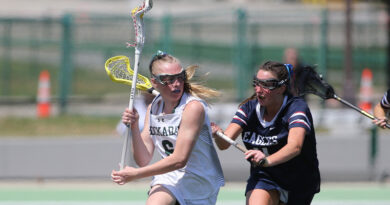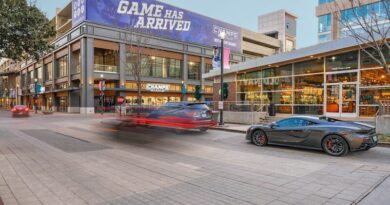How Does Sudie L. Williams’ Garden Grow?
At Sudie L. Williams Elementary School, sounds of chickens clucking compete with those of children romping on the playground.
A sizeable coop tucked beside the school building holds nine-egg laying hens with names such as Curly Toes, Pepper, and Cruella de Vil.
The sturdy structure is part of a large educational garden, complete with several raised planter beds and a covered outdoor classroom. Students and teachers make daily visits to tend to an array of flowering plants, vegetables, and herbs grown there, and to care for the chickens as part of lessons in science, math, reading, and language arts.
“They can apply almost every subject out here,” explained William Gatlin, a fifth-grade teacher at Williams who manages the garden. With help from other teachers, students, and parents, he also waters, plants, and feeds the hens on weekends and school breaks.
Students “love the chickens because they can come out and talk to them,” and give their feathered friends mealworms as snacks, Gatlin said. “They’re learning responsibility. It’s teaching them to resolve issues, to work things out, to work together.”
The same applies to time spent in the organic garden, which was established in 2015 with a grant from REAL School Gardens. The organization, which has offices in Washington, D.C., and Fort Worth, designs and builds educational gardens at low-income schools to boost student engagement and academic achievement.
With additional funding from Blue Cross Blue Shield of Texas, an open grass field on the Williams campus was transformed into the garden, which was largely designed by the school’s then-fourth-grade students.
“They left us with onions and potatoes, and that’s what we started with,” Gatlin said of the garden’s earliest crops. These days, students also grow lettuce, cabbage, squash, corn, jalapeños, bell peppers, and a variety of herbs, including spearmint, rosemary, Mexican sage, and garlic chives.
And students can sample most of the food they harvest.
“It’s amazing how many of the kids will actually try [the produce] even though they know they probably won’t like it,” Gatlin said. “I’ve seen kids … who say they don’t like tomatoes, but we’re like, `Try it,’ and they’re like, `It’s not so bad.’ ”
Potatoes have proven to be a particularly successful crop for the students. Last year, they donated 17 pounds of spuds to local churches.
In the future, Gatlin hopes produce from the garden will make its way into meals in the school’s cafeteria. “My goal is to take what we grow and move it inside,” he said.
The garden also features compost and rainwater collection bins, a tool shed, a pair of fruit trees, a wildflower garden, and a trickling pond. Because of the milkweed plants, which are critical to monarch butterflies, the space has been registered as a waystation for the winged creatures that migrate through Texas twice annually.
“The kids will watch the bees work, and they’ll talk about pollination,” Gatlin said. Having learned about scientific processes indoors, “They’re able to apply it in the garden. It’s amazing how it just happens on its own.”

For many Williams students living in apartments, the school garden is as close as they get to having a backyard of their own.
“This is the only chance for them to actually see where food comes from,” Gatlin explained. “When they first saw a potato pop out of the ground, they were like, `What is that?’ … It really amazes them to see their plants grow.”
Principal Michael Jackson grew up in the neighborhood.
“It really is a situation where kids don’t have a yard to play in,” he said. By tending the garden, “They get to see things grow, and that’s cool, because they’re our little seedlings.”








